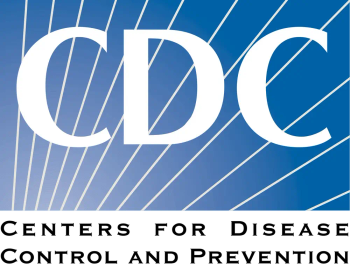
Impact of Obesity on Antibiotic Treatment Outcomes
Presented at MAD-ID by Mohammed Al Musawa, PharmD, BCIDP, the study found lower clinical success with imipenem-cilastatin-relebactam in obese patients, raising questions about dosing strategies.
Presented at MAD-ID 2025 by Mohammed Al Musawa, PharmD, BCIDP, postdoctoral fellow at Wayne State University, this multicenter retrospective study examined clinical outcomes of imipenem-cilastatin-relebactam (IMI-REL) in obese versus non-obese patients. Conducted across multiple sites from July 2019 to July 2024, the study evaluated 151 patients with a focus on how body mass index (BMI) may influence antibiotic effectiveness.
When asked what motivated the team to pursue this specific line of investigation, Al Musawa explained, "Obesity in the United States—especially among adults—is around 42%. From a pharmacokinetics perspective, we know that obesity alters the pharmacokinetics of antibiotics, particularly beta-lactams."
He noted that while earlier studies have explored beta-lactam use in obese patients, including a 2023 investigation involving ceftazidime-avibactam in Enterobacterales infections, few have focused on novel agents like IMI-REL.
"Previous studies on beta-lactams in obese patients have shown that treatment failure tends to be higher in that group. And recently, in 2023, a study was published focusing on novel beta-lactam/beta-lactamase inhibitors in obese patients. Specifically, they looked at ceftazidime-avibactam in 12 cases of Enterobacterales infections and found that treatment failure was higher in obese patients as well. So with that in mind, we said: ‘Okay, there’s no data about imipenem-cilastatin-relebactam in obese patients. Would the outcomes be different from other studies and agents in the same class?’"
In the study, 44 obese patients (BMI ≥30 kg/m²) and 107 non-obese patients (BMI <30 kg/m²) were included. Pneumonia was the most common infection type (52%), and pathogens primarily included Pseudomonas aeruginosa (72%) and carbapenem-resistant Enterobacterales (22%).
Clinical success was observed in 65.9% of obese patients versus 72% of non-obese patients, a difference that did not reach statistical significance (p=.460). Thirty-day all-cause mortality and microbiological recurrence were also numerically higher in obese patients, though these findings were likewise not statistically significant. Adverse events were rare, occurring in 6% of patients and prompting therapy discontinuation in three cases.
Al Musawa reflected on the implications of these findings, "We then looked into clinical success—asking whether there was any difference in outcomes, particularly treatment failure, between the two groups. And actually, we found there was a numerically higher failure rate in obese patients."
"When we saw the numerically higher failure rate in obese patients, it led us to ask: Why is this happening? We started thinking—maybe these patients need higher doses. Or maybe we need a larger sample size to really detect a statistically significant difference."
He emphasized how these trends could influence clinical practice, "This observation makes us, as clinicians, more cautious when treating obese patients receiving imipenem-cilastatin-relebactam. We might need to think about adjusting dosing—possibly giving higher doses or increasing the frequency of administration. It also highlights the need for more studies, especially on a larger scale, to explore this further. And if we can perform PK/PD studies, we might be able to determine the optimal dosing strategy—whether that means higher doses or more frequent dosing—for obese patients."
Given the study’s multi-center nature, variability in clinical settings was a known challenge. Al Musawa noted, "Multi-center studies always come with challenges. Each site has its own prescribing practices, different types of patients, and physicians may vary in how they use newer antibiotics like IMI-REL. We noticed some differences in comorbidities, in clinical practices, and even in how interventions were documented. But we tried to adjust for those differences as much as possible."
Despite these complexities, he emphasized the value of the multicenter approach, "Still, multi-center studies give us more representative and generalizable data compared to single-center studies, which is an advantage overall."
Reference
Al Musawa M, Biagi M, Kufel W, et al. Clinical outcomes of imipenem-cilastatin-relebactam in obese vs. non-obese patients. Presented at: MAD-ID 2025 Annual Meeting; May 29–31, 2025; Boston, MA. Poster 71 OR FRS.
Newsletter
Stay ahead of emerging infectious disease threats with expert insights and breaking research. Subscribe now to get updates delivered straight to your inbox.

















































































































































































































































































